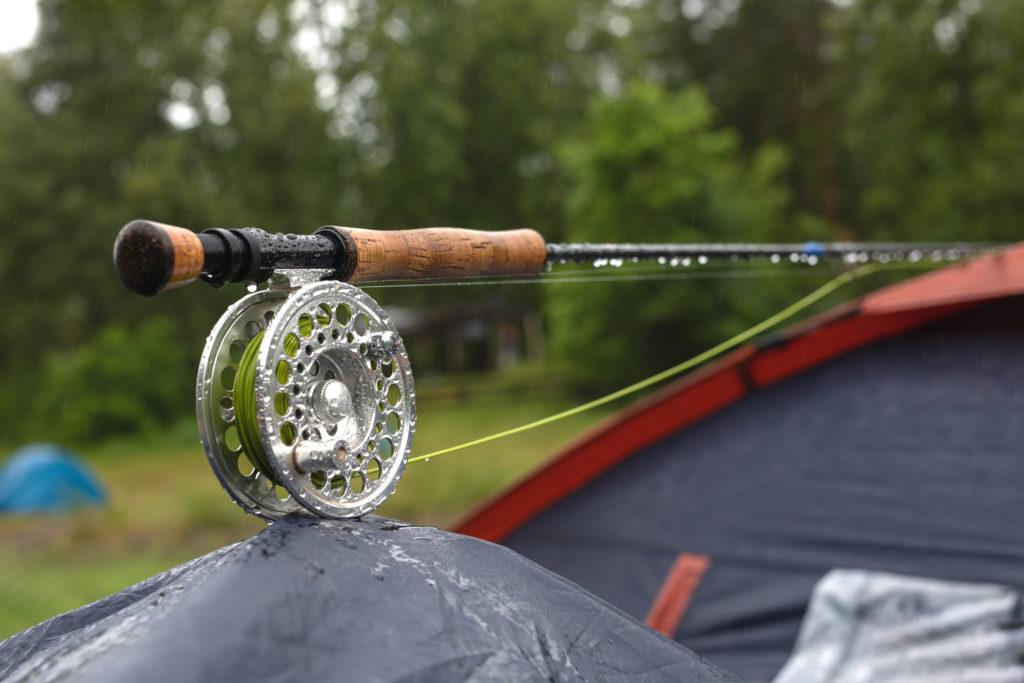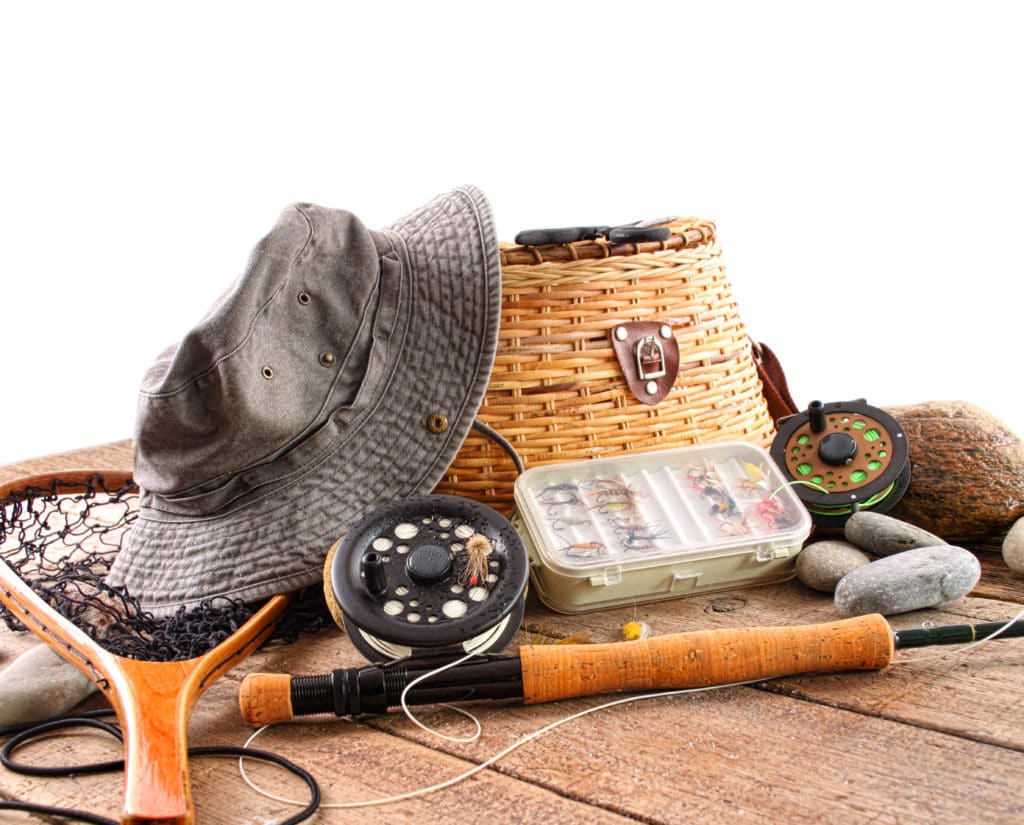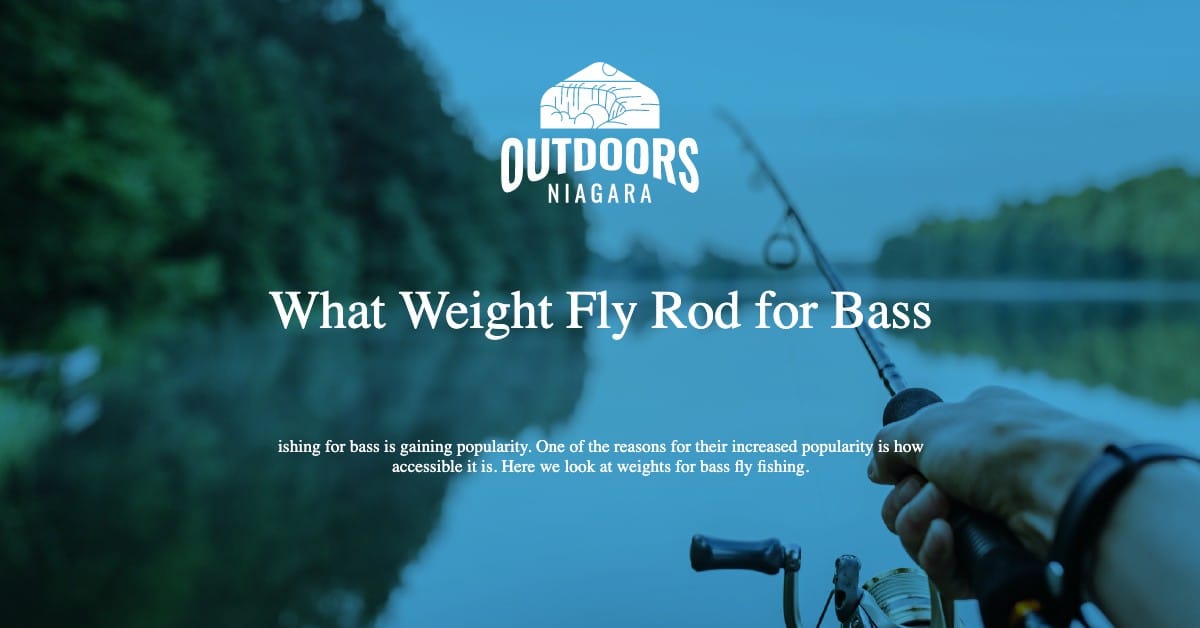Fly rods are fishing rods explicitly designed for fly fishing.
They look like other fishing rods but there are differences.
These differences are why an ordinary fishing rod cannot be used for fly fishing.
Fly rods are usually thin and lightweight compared to other fishing rods.
They are matched to the line according to their weight.
Some manufacturers mark recommended fly line weights on the rod, but using this knowledge might be difficult unless you know precisely what your fly line weighs.
Fishing for bass is gaining popularity. One of the reasons for their increased popularity is how accessible they are.
Bass are found in different aquatic habitats, which is another reason that non-fly tackles can be used to catch bass, and almost every angler has those.
Getting a suitable fly rod weight for bass is essential and knowing what weight to use is easy.
Keep reading below for everything you need to know.

Contents
Purposes of Fly Rods
There are several purposes to use a fly rod when fishing for bass. Here are some of the main considerations to keep in mind:
Casting
Fly rods allow the line to be cast accurately. Having good fly casting skills helps too.
A good fly rod used with great casting skills will result in the fly and fly line being properly cast, thus reducing the chances of the fish being spooked.
Provide line control
The fly rod allows an angler control over the line out on the water.
Striking and landing fish
The fly rod is used to set the hook on a fish and bring it to land. The rod has to be flexible and strong enough to bend without snapping to do this properly.

Choosing a Fly Rod
There are three things you should consider when choosing a fly rod: the weight, the length, and the action.
Weight
The weight of fly rods indicates the size of the fishing line that matches the rod.
Generally, your line can be up or down one size.
This is why a 5-weight rod is used by most anglers for trout fishing.
But choosing the right weight doesn’t only depend on the type of fish.
The size of the fly also matters.
Generally, rod weights 1 to 4 are used in small streams for small trout and small fish.
4 to 6 are used in larger streams and rivers for general trout. 6 to 8 are used for bass, carp, and salmon.
Weights 8 to 10 are used for salmon and winter steelhead. 10 to 14 are reserved for bigger game.
Length
Length is quite important when choosing a fly rod.
A longer rod will make getting more distance on your cast and fighting fish easier.
A shorter rod works better with smaller streams, as it gives room to navigate brushes.
Action
The fly rod’s action refers to the flexibility of the fly rod.
There are three types of fly rod actions: fast action, medium action, and slow action. Each one has its benefits and drawbacks.
- Fast action
The rod’s tip is slightly bent but the rest of the rod is straight as an arrow.
When used for long casts, the stiffness of the rod gives the cast more power.
During windy days, the stiffness of the rod makes casting easy.
Another benefit of using a fast-action rod is that it is less physically demanding.
An angler can use it without working too much.
However, using a fast-action rod is not ideal for short casts.
Using the rod is also tricky for beginners.
New anglers would find it difficult to cast.
- Medium action
These rods are the most versatile ones available.
On the backcast, the rod’s bending falls between fast and slow action rods.
They perform under various conditions and are easier for new anglers to handle than fast-action rods.
- Slow action
These rods are the most flexible.
They can bend into a shallow but graceful 90-degree angle at full backcast and are recommended for fishing in small streams.
They have a great presentation and casting them is easy.
The Best Fly Rod Weight for Bass
The fly rod weight that would best suit your needs depends on factors like fish size, body of water, fly line type, and cover you’ll mostly focus on.
Some of the common weights you can use for bass include:
5 Weight
This is the most popular rod weight and most fly anglers own a 5 weight.
This rod size is great for trout fishing and an excellent choice for bass fishing.
Largemouth bass lives in some odd places and can therefore be found in various small bodies of water near you.
A 5-weight rod will work well for you. This is because you’d be using a smaller fly for the smaller water body.
6 Weight
This is an excellent choice for fishing around light cover or in open water.
It is a little bit more potent than the 5-weight rod, allowing anglers to cast some flies that a 5-weight rod won’t, such as small streamers.
6-weight rods are ideal for fighting larger bass because they are manufactured with small fighting butts.
7 Weight
The 7-weight rod is so versatile that if we had to recommend a single weight, it would be the 7-weight rod.
The rod works well with larger flies. Small, light streamers can also be cast perfectly with a 7-weight rod.
The rod can handle bigger bass around a modest cover. For smallmouth bass in small and large rivers, a 7-weight rod is perfect.
8 Weight
This is an incredibly versatile rod when fly-fishing for bass.
The rod is quite popular among bass anglers, and with good reason.
A good 8-weight rod will handle most flies, including large streamers.
Bass are aggressive feeders and will go after streamers that imitate an injured fish.
A good 8-weight rod will get your small and larger streamers where they are meant to be.
9 Weight
This weight is suitable for casting long baitfish streamers, heavily weighted patterns, and fishing in windy conditions.
This rod is highly recommended for fishing in and around thick cover.
Selecting Rod Weight for Bass
Although smallmouth and largemouth bass belong to the same fish species, they are different.
5 weight rods are great for small bass. 6 to 7 weight rods are best for medium-sized bass.
8 to 9 are great for larger bass. Bigger bass like the striped bass will require a weight rod of 9 to 12 units.
New anglers should stick to weight rods of 5 to 8 units, as they are the easiest to cast.
With more experience, the weight of the rod may be changed according to the fishing area.
Another feature to be considered when choosing a rod is the number of pieces.
Most rods come in two or four pieces. Four-piece rods are fast becoming the standard as they are more portable.
The rod’s material is also important.
Final Thoughts
Fishing for largemouth and smallmouth bass can be fun.
Knowing the type of fishing situation you’ll be involved in and then having the correct weight rod will help greatly.
New anglers should go for rods that they will be comfortable using.
The rod weights listed above should be used accordingly.
If you plan to fish from a boat or visit different waters, buying more than one might be best.







